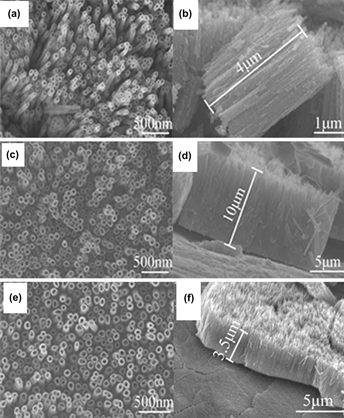Article contents
The increased interface charge transfer in dye-sensitized solar cells based on well-ordered TiO2 nanotube arrays with different lengths
Published online by Cambridge University Press: 31 March 2014
Abstract

The well-ordered TiO2 nanotube arrays with controlled aspect ratio are fabricated via potentiostatic anodization. The aspect ratio of TiO2 nanotube array can be tuned conveniently by changing the water content in electrolyte and anodization time. The formation of well-ordered TiO2 nanotube array is good for the photogenerated electron transfer. So, the well-ordered TiO2 nanotube array photoelectrodes have been used to fabricate dye-sensitized solar cells (DSSCs). It is found that, with the optimum nanotube length and aspect ratio, DSSCs with TiO2 nanotube array photoelectrodes show better photoelectric conversion efficiency (2.60%) than that with TiO2 nanoparticles on Ti foil photoelectrode. It is elucidated by the interfacial electron transport of DSSCs, which are characterized quantitatively, using the electrochemical impedance spectra. The DSSC with optimal nanotube length and aspect ratio displays the fastest interfacial electron transfer and longer electron lifetime.
- Type
- Articles
- Information
- Copyright
- Copyright © Materials Research Society 2014
References
REFERENCES
- 10
- Cited by


